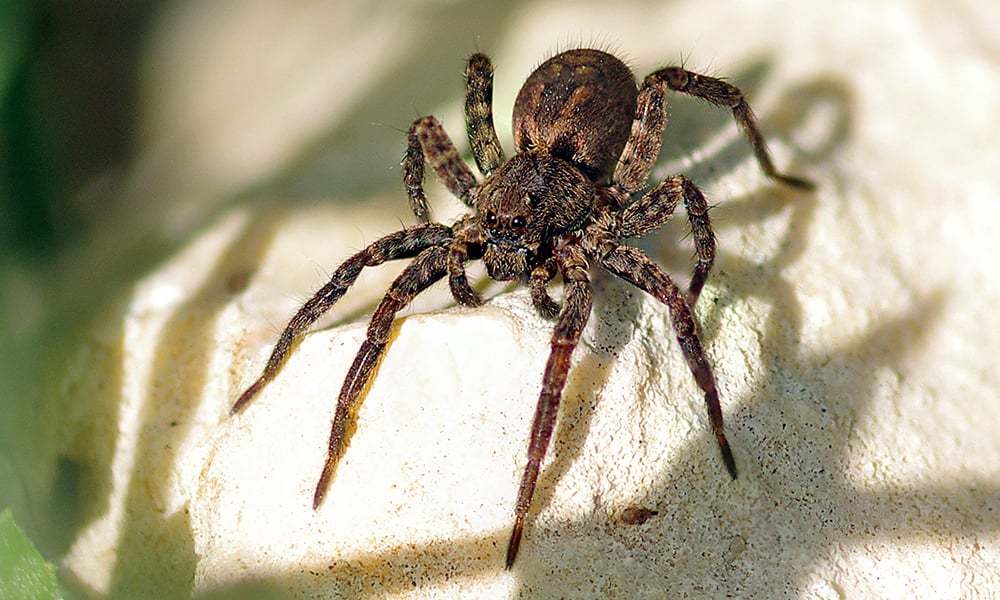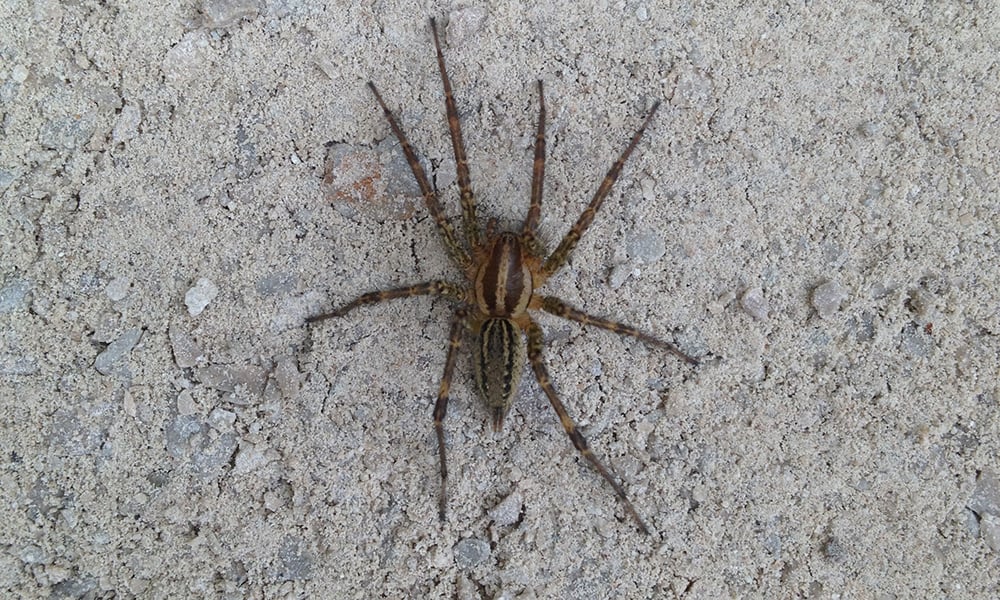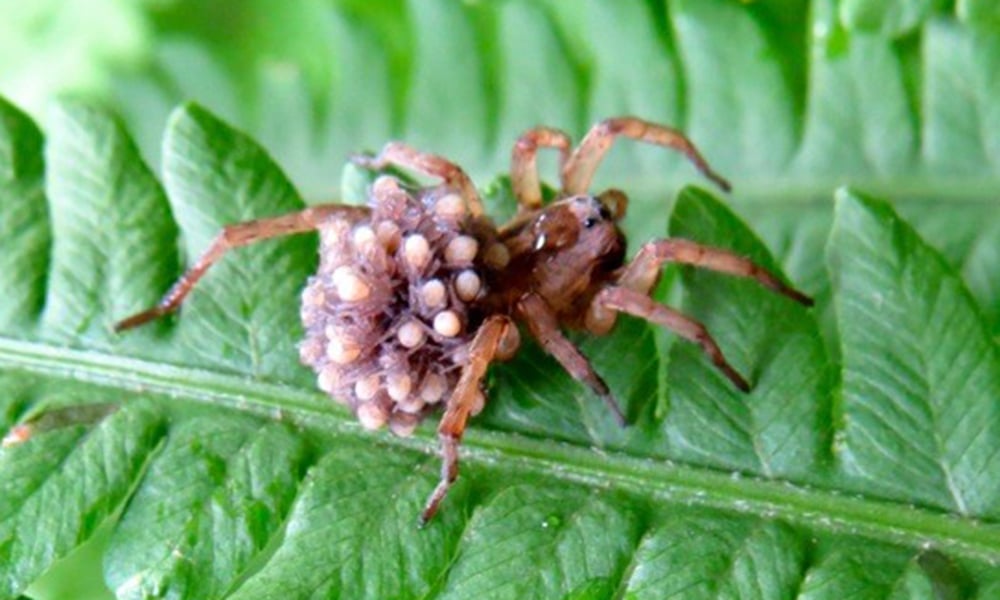
Ranging in size from half an inch to over two inches, these large, hairy spiders may be the fuel of nightmares for some people.
Foreboding as wolf spiders may seem, they are equipped with some amazing adaptations and really quite beneficial. Read on to decide for yourself.
Common across the globe
Wolf spiders belong to the family Lycosidae and are among the most common spider species found around the world from the tropics to the arctic. Illinois boasts at least 47 species of wolf spiders. These hardy spiders can be brown or black with subtle markings of red, brown, yellow or tan. The color of a wolf spider generally depends on the habitat it lives in so that it can camouflage easily with its surroundings.
Spider Dwellings
Wolf spiders live on the ground and hide under rocks, logs, in leaf litter and under plants. They do not spin webs, but some species will create burrows in the soil or crevices in rocks and trees. People encounter them in their yards, garages and sheds, humid basements, and around windows and doors because these locations are perfect hunting grounds to find food. Wolf spiders also seek warmer places to hibernate through the winter, which can mean sharing your yard or basement with a few eight-legged roommates.

Excellent Hunters
The Latin name, “Lycos,” means “wolf” because wolf spiders are keen hunters that chase or pounce on prey like wolves rather than spin a web and wait for a meal. Unlike wolves hunting as packs, wolf spiders generally live and hunt alone. Hunting occurs both day and night.
Wolf spiders have excellent eyesight with three rows of eight eyes. Two large eyes in the middle row easily distinguish wolf spiders from other spider species. Hold a flashlight next to your head and shine it along the ground at night to catch the glitter of spider eyeshine as the light reflects back to you from their large eyes.
The hairs covering their bodies provide an extra-sensitive sense of touch to detect and catch prey. Their large, strong legs provide agility and speed up to two feet per second to chase and catch prey over short distances. Lucky for us, wolf spiders hunt and eat insects that some people may consider pests, including crickets, cockroaches, mealworms and beetles.
Caring Mothers
The female wolf spider carefully carries her egg sac under her abdomen until the spiderlings hatch. Unlike any other spider species, the spiderlings then hitch a ride on her back for several weeks until they are large enough to fend for themselves.

A female wolf spider carries its young on its back until they are large enough to fend for themselves.
Their looks are worse than their bite
The size and appearance of a wolf spider can be startling, yet these spiders prefer to remain out of sight to hunt in solitude. Although wolf spiders can bite humans, they do it as a last resort if they cannot escape. Wolf spider bites can cause mild pain, swelling and itchiness at the site. Luckily, the pain from a bite generally lasts only minutes and results from the actual mechanical bite not from the venom. Although their large size and hairy appearance may seem scary, wolf spiders are actually important predators on the hunt for pests in your yard and home.